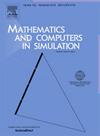Prediction of breast cancer using metaheuristic-driven ensemble learning: A novel classification approach
IF 4.4
2区 数学
Q1 COMPUTER SCIENCE, INTERDISCIPLINARY APPLICATIONS
引用次数: 0
Abstract
Breast cancer remains one of the most common cancers among women, with a high mortality rate. Early diagnosis is crucial for effective treatment and prevention. This study introduces an innovative approach to breast cancer prediction, integrating Support Vector Classification and Histogram Gradient Boosting Classification models with a novel ensemble method using bagging. To further enhance predictive accuracy, three new metaheuristic optimization algorithms (Mother Optimization Algorithm, Osprey Optimization Algorithm, and Puma Optimization Algorithm) are employed. The study rigorously applies feature selection techniques and k-fold cross-validation to ensure optimal results. The novelty lies in the cooperative use of these reliable classification models with advanced metaheuristic optimizers and an ensemble strategy, leading to superior performance in breast cancer prediction. The Boosting Algorithm Puma Optimization Algorithm model, optimized with the Puma Optimization Algorithm, achieved exceptional classification performance, with 0.9606 for malignant cases and 0.9760 for benign cases, supported by an Metahueristic Algorithm Classification of 0.9368. This demonstrates the model's high accuracy and reliability in clinical diagnosis, making a significant contribution to healthcare by optimizing machine learning models for more accurate and trustworthy predictions.
利用元启发式驱动的集合学习预测乳腺癌:一种新颖的分类方法
乳腺癌仍然是妇女最常见的癌症之一,死亡率很高。早期诊断对于有效治疗和预防至关重要。本研究引入了一种创新的乳腺癌预测方法,将支持向量分类和直方图梯度提升分类模型与一种新颖的袋集方法相结合。为了进一步提高预测准确性,研究采用了三种新的元启发式优化算法(Mother 优化算法、Osprey 优化算法和 Puma 优化算法)。研究严格应用了特征选择技术和 k 倍交叉验证,以确保获得最佳结果。新颖之处在于将这些可靠的分类模型与先进的元启发式优化器和集合策略配合使用,从而在乳腺癌预测方面取得了卓越的性能。经 Puma 优化算法优化的 Boosting 算法 Puma 优化算法模型取得了优异的分类性能,恶性病例的分类结果为 0.9606,良性病例的分类结果为 0.9760,元启发式算法分类结果为 0.9368。这表明该模型在临床诊断中具有很高的准确性和可靠性,通过优化机器学习模型以获得更准确、更可靠的预测,为医疗保健做出了重大贡献。
本文章由计算机程序翻译,如有差异,请以英文原文为准。
求助全文
约1分钟内获得全文
求助全文
来源期刊

Mathematics and Computers in Simulation
数学-计算机:跨学科应用
CiteScore
8.90
自引率
4.30%
发文量
335
审稿时长
54 days
期刊介绍:
The aim of the journal is to provide an international forum for the dissemination of up-to-date information in the fields of the mathematics and computers, in particular (but not exclusively) as they apply to the dynamics of systems, their simulation and scientific computation in general. Published material ranges from short, concise research papers to more general tutorial articles.
Mathematics and Computers in Simulation, published monthly, is the official organ of IMACS, the International Association for Mathematics and Computers in Simulation (Formerly AICA). This Association, founded in 1955 and legally incorporated in 1956 is a member of FIACC (the Five International Associations Coordinating Committee), together with IFIP, IFAV, IFORS and IMEKO.
Topics covered by the journal include mathematical tools in:
•The foundations of systems modelling
•Numerical analysis and the development of algorithms for simulation
They also include considerations about computer hardware for simulation and about special software and compilers.
The journal also publishes articles concerned with specific applications of modelling and simulation in science and engineering, with relevant applied mathematics, the general philosophy of systems simulation, and their impact on disciplinary and interdisciplinary research.
The journal includes a Book Review section -- and a "News on IMACS" section that contains a Calendar of future Conferences/Events and other information about the Association.
 求助内容:
求助内容: 应助结果提醒方式:
应助结果提醒方式:


